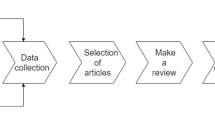Abstract
Currently data are often acquired by using various remote sensing sensors and systems, which produce big data sets. One of important product are digital models of geographical surfaces that include the sea bottom surface. To improve their processing, visualization and management is often necessary reduction of data points. Paper presents research regarding the application of neural networks for bathymetric geodata reductions. Research take into consideration radial networks, single layer perceptron and self-organizing Kohonen network. During reconstructions of sea bottom model, results shows that neural network with less number of hidden neurons can replace original data set. While the Kohonen network can be used for clustering during reduction of big geodata. Practical implementation of neural network with creation of surface models and reduction of bathymetric data is presented.
Access this chapter
Tax calculation will be finalised at checkout
Purchases are for personal use only
Similar content being viewed by others
References
Balicki, J., Kitowski, Z., Stateczny, A.: Artificial neural networks for modelling of spatial shape of sea bottom. In: IV Conference of Neural Networks and Their Applications, Zakopane (1999)
Bishop, C.M.: Neural Networks for Pattern Recognition. Oxford University Press, New York (1995)
Carlson, R.E., Foley, T.A.: Radial Basis Interpolation Methods on Track Data, Lawrence Livermore National Laboratory, No. UCRL-JC-1074238 (1991)
Franke, R., Nielson, G.: Smooth interpolation of large sets of scattered data. Int. J. Numer. Methods Eng. 15, 1691–1704 (1980)
Franke, R.: Scattered data interpolation: test of some methods. Math. Comput. 38(157), 181–200 (1982)
Haykin, S.: Neural Networks a Comprehensive Foundation. Macmillan College Publishing Company, New York (1994)
Kansa, E.J., Carlson, R.E.: Improved accuracy of multiquadric interpolation using variable shape parameter. Comput. Math. Appl. 24(12), 99–120 (1992)
Lubczonek, J., Stateczny, A.: Concept of neural model of the sea bottom surface. In: Rutkowski, L., Kacprzyk, J. (eds.) Neural Networks and Soft Computing Book Series: Advances in Soft Computing, pp. 861–866. Physica, Heidelberg (2003). https://doi.org/10.1007/978-3-7908-1902-1_135
Lubczonek, J.: Hybrid neural model of the sea bottom surface. In: Rutkowski, L., Siekmann, J.H., Tadeusiewicz, R., Zadeh, L.A. (eds.) ICAISC 2004. LNCS (LNAI), vol. 3070, pp. 1154–1160. Springer, Heidelberg (2004). https://doi.org/10.1007/978-3-540-24844-6_181
Maleika, W., Palczynski, M., Frejlichowski, D.: Interpolation methods and the accuracy of bathymetric seabed models based on Multibeam Echosounder data. In: Pan, J.-S., Chen, S.-M., Nguyen, N.T. (eds.) ACIIDS 2012. LNCS (LNAI), vol. 7198, pp. 466–475. Springer, Heidelberg (2012). https://doi.org/10.1007/978-3-642-28493-9_49
Smith, M., Goodchild, M., Longley, P.: Geospatial Analysis - A Comprehensive Guide to Principles, Techniques and Software Tools, 3rd edn. (2009)
Stateczny, A., Kazimierski, W.: Determining manoeuvre detection threshold of GRNN filter in the process of tracking in marine navigational radars. In: Kawalec, A., Kaniewski, P. (eds.) 2008 Proceedings International Radar Symposium, Wrocław, pp. 242–245 (2008)
Stateczny, A.: Artificial neural networks for comparative navigation. In: Rutkowski, L., Siekmann, J.H., Tadeusiewicz, R., Zadeh, L.A. (eds.) ICAISC 2004. LNCS (LNAI), vol. 3070, pp. 1187–1192. Springer, Heidelberg (2004). https://doi.org/10.1007/978-3-540-24844-6_186
Stateczny, A.: The neural method of sea bottom shape modelling for the spatial maritime information system. In: Brebbia, CA., Olivella, J. (eds.) Maritime Engineering and Ports II. Water Studies Series, Barcelona, vol. 9, pp. 251–259 (2000)
Tarwater, A.E.: A parameter study of Hardy’s multiquadric method for scattered data interpolation. Lawrence Livermore National Laboratory. Technical Report: UCRL-53670 (1985)
Wlodarczyk-Sielicka, M.: Importance of neighborhood parameters during clustering of bathymetric data using neural network. In: Dregvaite, G., Damasevicius, R. (eds.) ICIST 2016. CCIS, vol. 639, pp. 441–452. Springer, Cham (2016). https://doi.org/10.1007/978-3-319-46254-7_35
Wlodarczyk-Sielicka, M., Stateczny, A.: Fragmentation of hydrographic big data into subsets during reduction process. In: Proceedings of 2017 Baltic Geodetic Congress (Geomatics), 22–25 June 2017, Poland. Gdansk University of Technology (2017). https://doi.org/10.1109/bgc.geomatics.2017.67
Wlodarczyk-Sielicka, M., Stateczny, A.: General concept of reduction process for big data obtained by interferometric methods. In: Rohling, H. (ed.) Proceedings of 18th International Radar Symposium (IRS 2017), Prague (2017). https://doi.org/10.23919/irs.2017.8008212. ISBN: 978-3-7369-9343-3
Wlodarczyk-Sielicka, M., Stateczny, A.: Clustering bathymetric data for electronic navigational charts. J. Navig. 69(05), 1143–1153 (2016). https://doi.org/10.1017/s0373463316000035. The Royal Institute of Navigation 2016
Author information
Authors and Affiliations
Corresponding author
Editor information
Editors and Affiliations
Rights and permissions
Copyright information
© 2018 Springer Nature Switzerland AG
About this paper
Cite this paper
Lubczonek, J., Wlodarczyk-Sielicka, M. (2018). The Use of an Artificial Neural Network for a Sea Bottom Modelling. In: Damaševičius, R., Vasiljevienė, G. (eds) Information and Software Technologies. ICIST 2018. Communications in Computer and Information Science, vol 920. Springer, Cham. https://doi.org/10.1007/978-3-319-99972-2_29
Download citation
DOI: https://doi.org/10.1007/978-3-319-99972-2_29
Published:
Publisher Name: Springer, Cham
Print ISBN: 978-3-319-99971-5
Online ISBN: 978-3-319-99972-2
eBook Packages: Computer ScienceComputer Science (R0)




